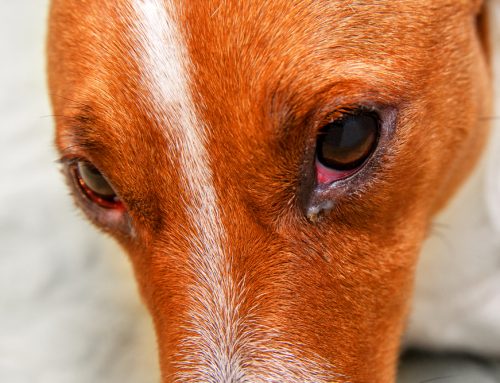Watery eyes, runny nose, sneezing, and other symptoms of allergies are something many of us have had to deal with, and even if we don’t personally deal with allergies, we know someone who does.
Pets can also suffer from seasonal, environmental, and food allergies, although the symptoms may manifest differently than they do in humans. Allergies in pets are not always easy to diagnose and treat, but there are several proactive things a pet owner can do to keep their furry friends comfortable.
Allergies in Pets
Allergies are the result of the immune system overreacting to foreign particles that enter the body through inhalation, ingestion, or contact with the skin. The most common causes of allergies in pets are:
- Seasonal allergies – Like people, pets can suffer from allergies to grasses and pollen in the spring, summer, and/or fall months.
- Environmental allergies – Pets can be allergic to a wide variety of environmental compounds, including mold, dust and dust mites, flea saliva, dander, cleaning and laundry products, perfume, and cigarette smoke.
- Food allergies – The most prevalent food items a pet may be sensitive to include corn, chicken, seafood, wheat, soy, and additives.
Symptoms of an Allergy
Different types of allergies can produce varied symptoms. As a general rule, the following symptoms are associated with allergies in pets:
- Incessant scratching or pawing at the face, ears, and head
- Excessive licking of the paws
- Redness or swelling of the skin
- Rashes, bumps, or sores on the skin
- Red, watery eyes
- Sneezing, runny nose
- Hair loss
- Head shaking
- Unpleasant odor
- Vomiting/diarrhea
- Weight loss
Managing Allergies in Pets
If you notice any of the above symptoms in your pet, give us a call to schedule a consultation and possible allergy testing to pinpoint your pet’s allergies. Once a diagnosis is completed, we can start them on a treatment plan aimed at providing maximum health and comfort through medication, allergen specific immunotherapy, and/or dietary changes.
There are many things that can be done at home to help ensure an ideal environment for an allergic pet, including:
- Brushing your pet daily and bathing (per your veterinarian’s instructions) with a hypoallergenic shampoo/conditioner
- Reducing allergens inside the home with regular vacuuming, sweeping, dusting, and laundering of blankets and pet bedding
- Using a HEPA air filter
- Keeping your pet on a flea preventive protocol year-round to protect against allergic symptoms
Getting Help
If you suspect your pet is suffering from allergies, do not attempt to treat them with over-the-counter or home remedies, unless instructed by your veterinarian. Using human medications or other treatments on your pet can cause serious harm.
Don’t hesitate to contact your team at Town & Country Animal Hospital with your questions regarding allergies in pets.







Leave A Comment